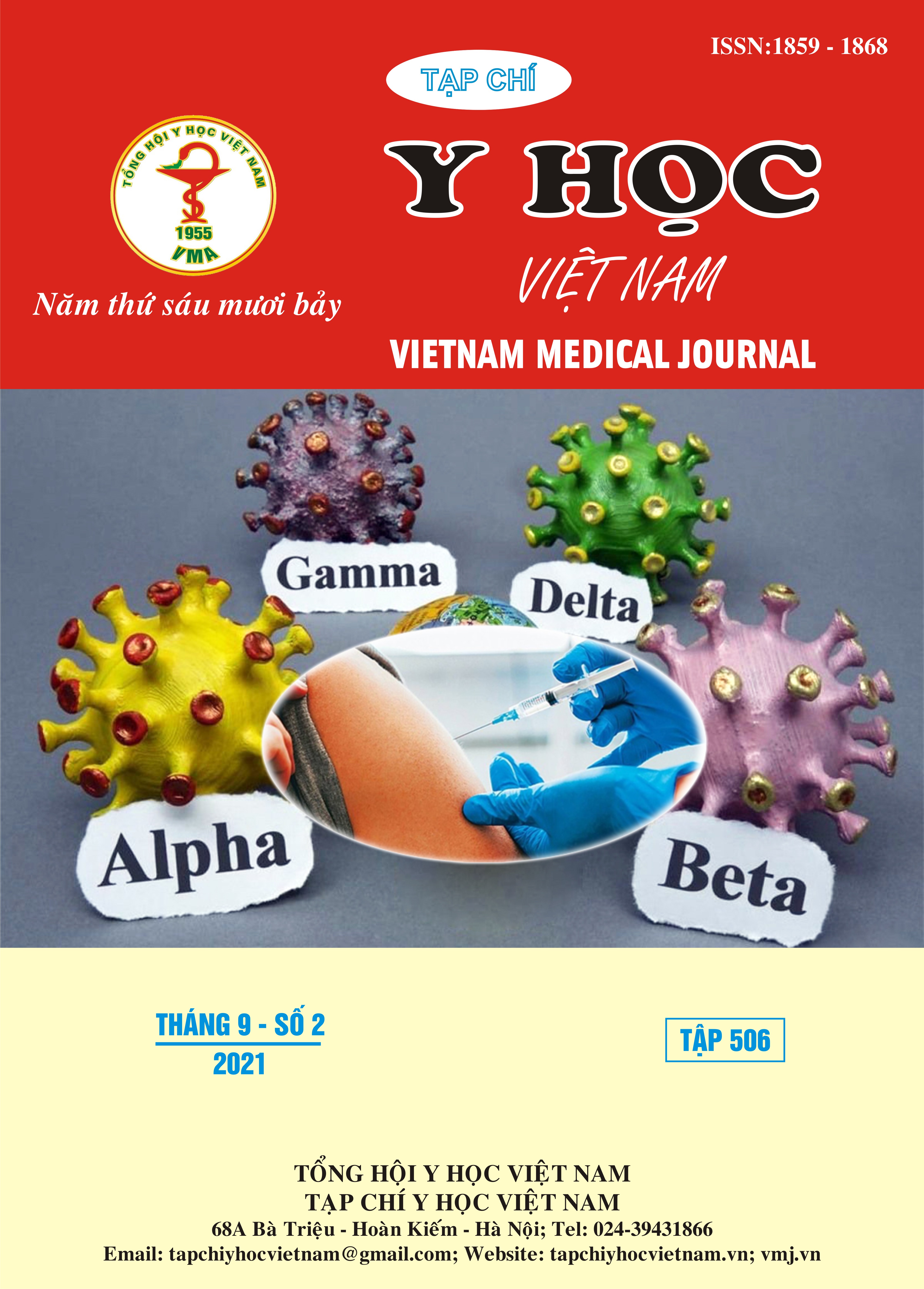CEPHALOMETRIC CHARACTERISTIC OF ANTERIOR OPEN BITE IN VIETNAMESE PEOPLE
Main Article Content
Abstract
Anterior open bite (AOB) is a malocclusion that greatly affects function and aesthetics. Besides, long-term stability of AOB malocclusion is considered challenge for orthodontists. This study aims to describe some morphological characteristics of 36 Vietnamese subjects with anterior open bite between the ages of 10 and 18 years old who had presented the Hanoi Central Odonto-Stomatology Hospital and School of Odonto - Stomatology, Hanoi Medical University. The results of research showed that anterior open bite in Vietnamese people is a rare type of malocclusion. It is more common in women, but no statistically significant difference was found between the genders. Most of the subjects had moderate anterior open bite (-1.39±0.499 mm). The largest proportion is class III skeletal (n=15; 41.7%), the lower anterior facial height (LAFH) is 63.41±6.185mm (female) and 68.29±5,341mm (male). The posterior/anterior facial height ratio (PFH/AFH) = 0.651±0.057. The overbite depth indicator (ODI) is 61.25±9,241, the antero-posterior dysplasia indicator (APDI) is 86.97±11,597, the combined factor (CF) is 148.22±8.642. The height of the maxillary and mandibular first molars relative to the palatal plane and mandibular plane, respectively, is d(U6,PP) = 21.83±2.22 and d(L6,MP) 29.33 ±3,341. Conclusion: Anterior open bite in subjects with permanent teeth (10-18 years old) occurs more frequently in skeletal class III pattern. The majority of subjects had moderate degree of open bite. They showed the characteristics of increasing the anterior facial height and has a hyperdivergent skeletal pattern.
Article Details
Keywords
anterior open bite, cephalometric, Vietnamese
References
2. Sassouni V, Nanda S. Analysis of dentofacial vertical proportions. American Journal of Orthodontics. 1964;50(11): 801-823. doi:10.1016/ 0002-9416(64) 90039-9
3. Trang NT, Phương NTT, Dũng TM, Hải HV. Đặc điểm mô cứng trên phim sọ - mặt nghiêng ở Việt trưởng thành có sai khớp cắn loại I. Accessed September 9, 2021. http:// hocvienquany.edu.vn/ Tapchi_YDHQS/Portal/Default.aspx?MaAbstract=52257
4. Ho TTT, Luong QT. Dental-craniofacial Characteristics of Southern Vietnamese People with Well-balanced Face on Cephalometric Films and Its Comparison with Caucasians and Northern Vietnamese Population. J Int Soc Prev Community Dent. 2021;11(3):316-323. doi:10.4103/ jispcd.JISPCD_13_21
5. Kim YH. Overbite depth indicator with particular reference to anterior open-bite. Am J Orthod. 1974;65(6):586-611. doi:10.1016/0002-9416(74) 90255-3
6. Freudenthaler J, Celar A, Kubota M, Akimoto S, Sato S, Schneider B. Comparison of Japanese and European overbite depth indicator and antero-posterior dysplasia indicator values. Eur J Orthod. 2012;34(1):114-118. doi:10.1093/ejo/cjq177
7. MEAW Multi-loop Edgewise Archwire. Dental Library. Published May 14, 2019. Accessed September 6, 2021. https://dental-library.com/ meaw-multi-loop-edgewise-archwire/
8. Enoki C, Telles C de S, Matsumoto MAN. Dental-skeletal dimensions in growing individuals with variations in the lower facial height. Braz Dent J. 2004;15:68-74. doi:10.1590/ S0103-64402004000100013


